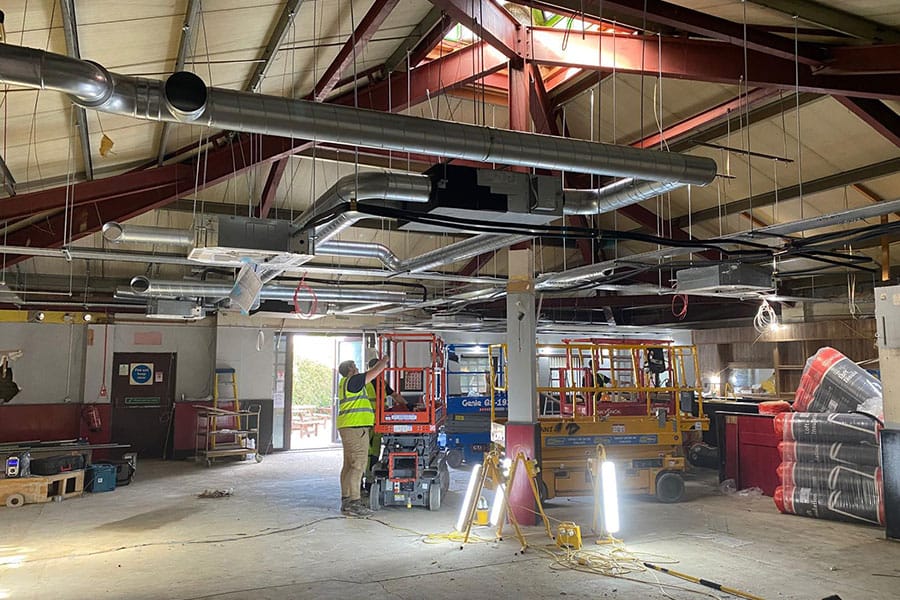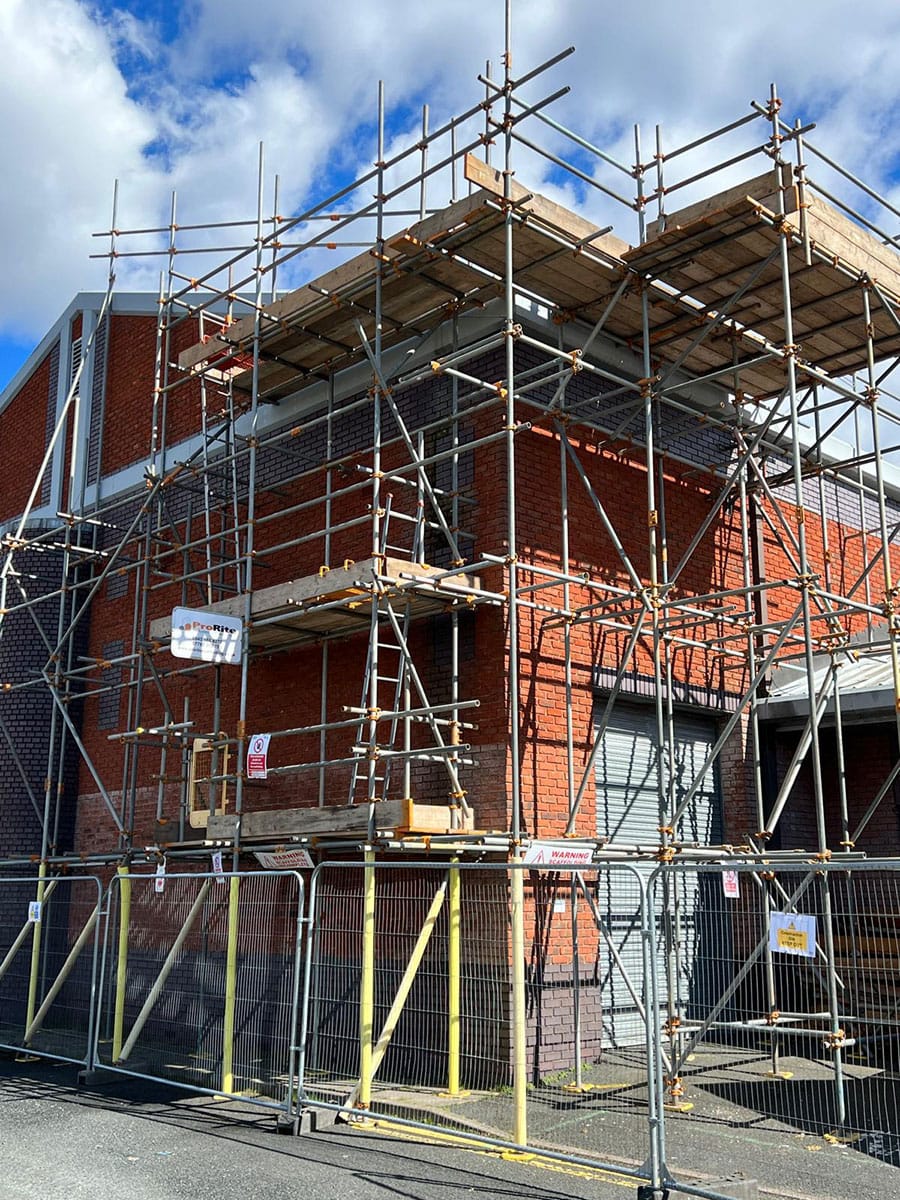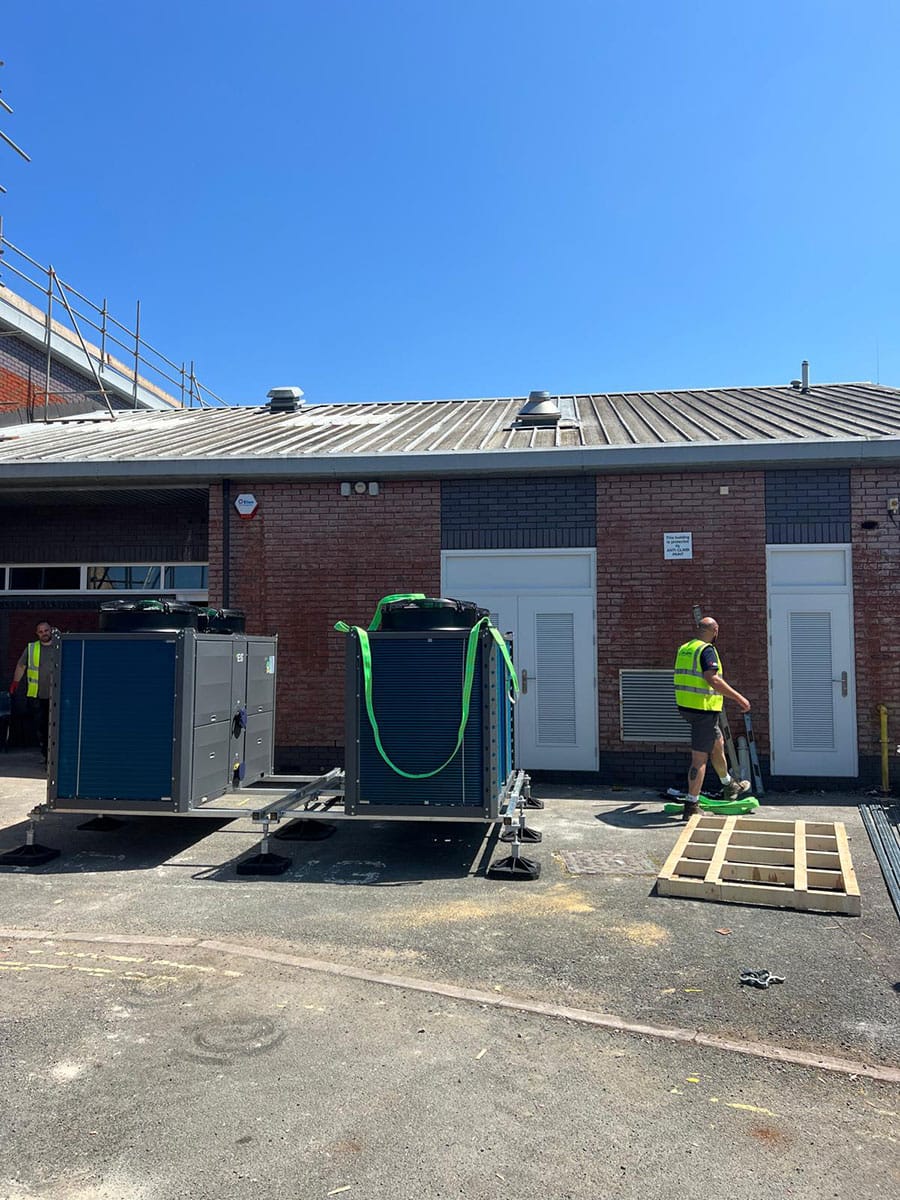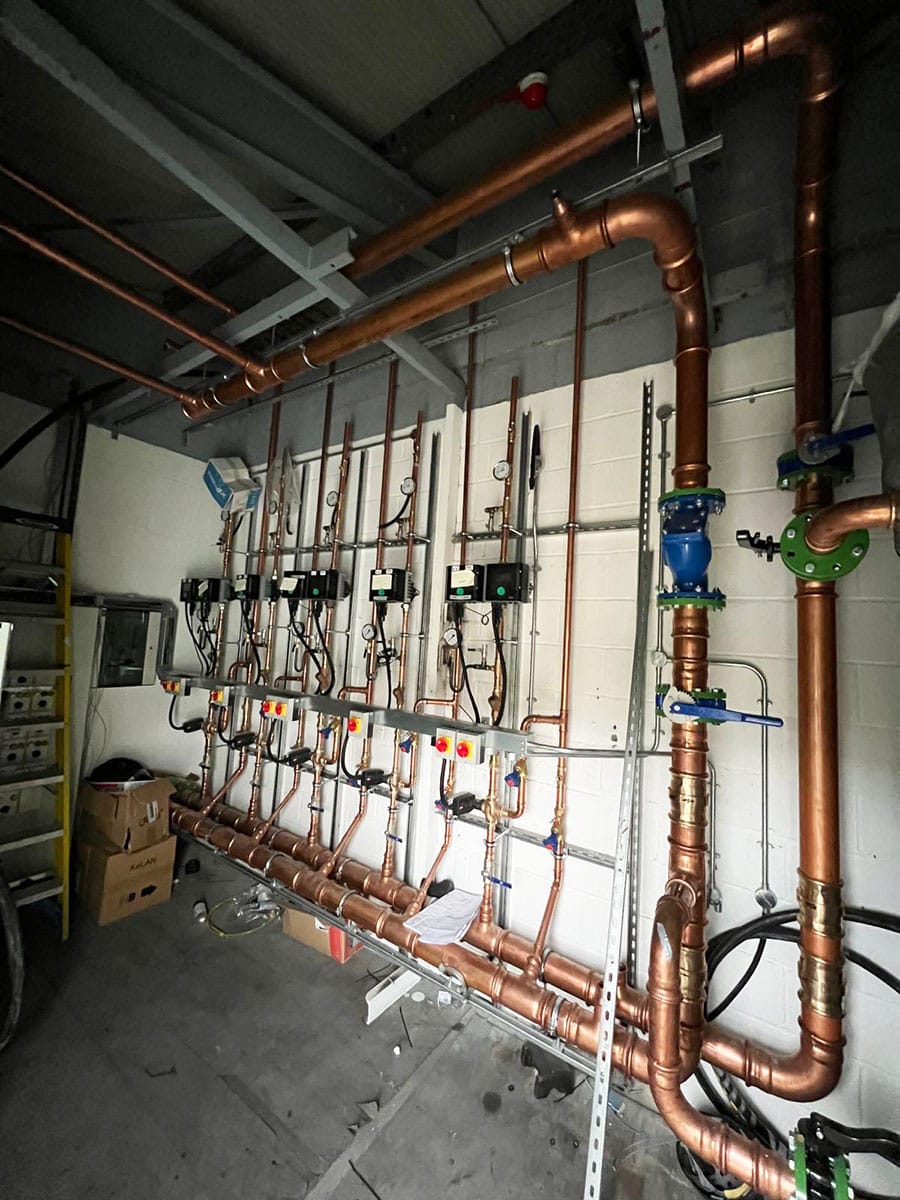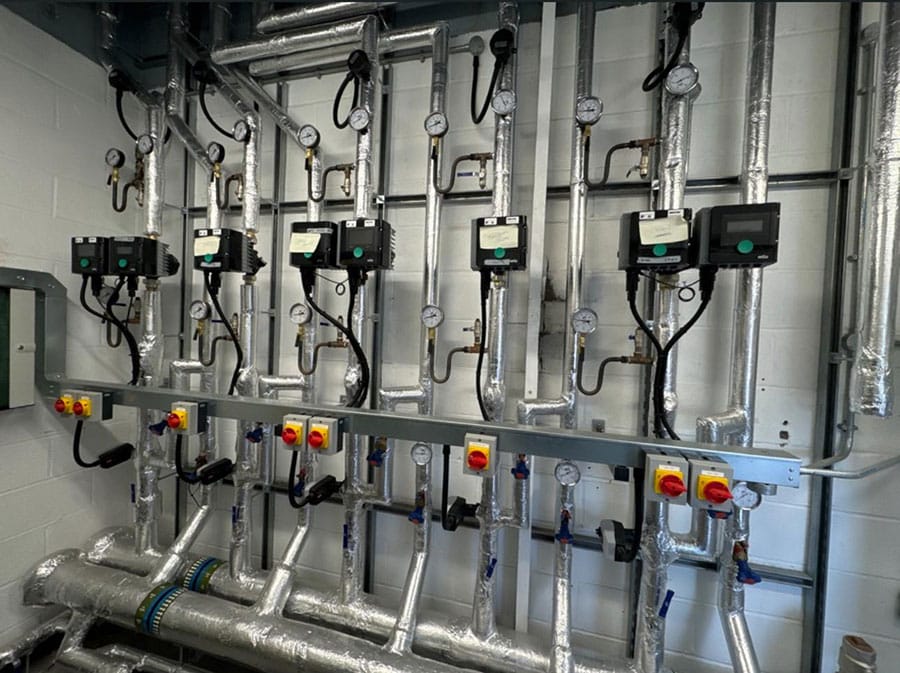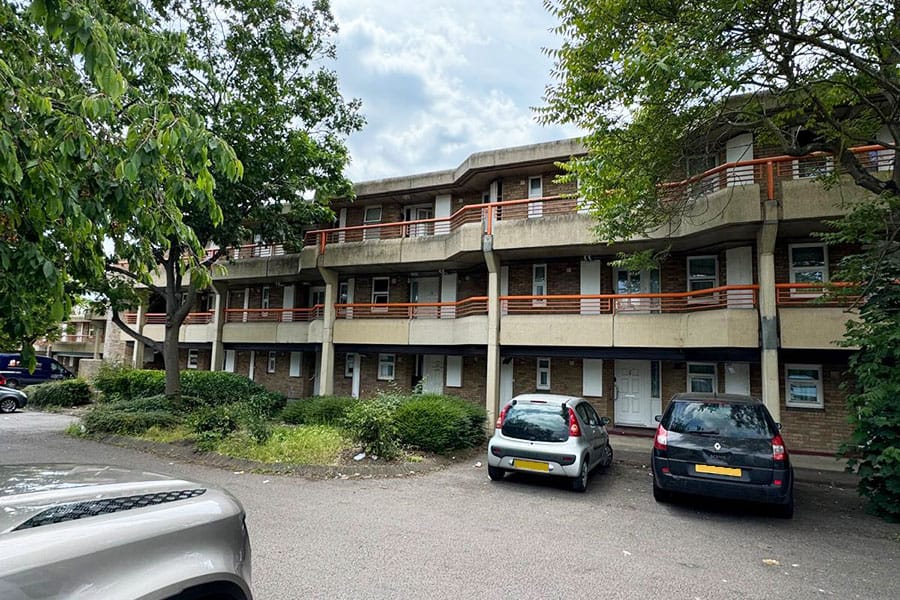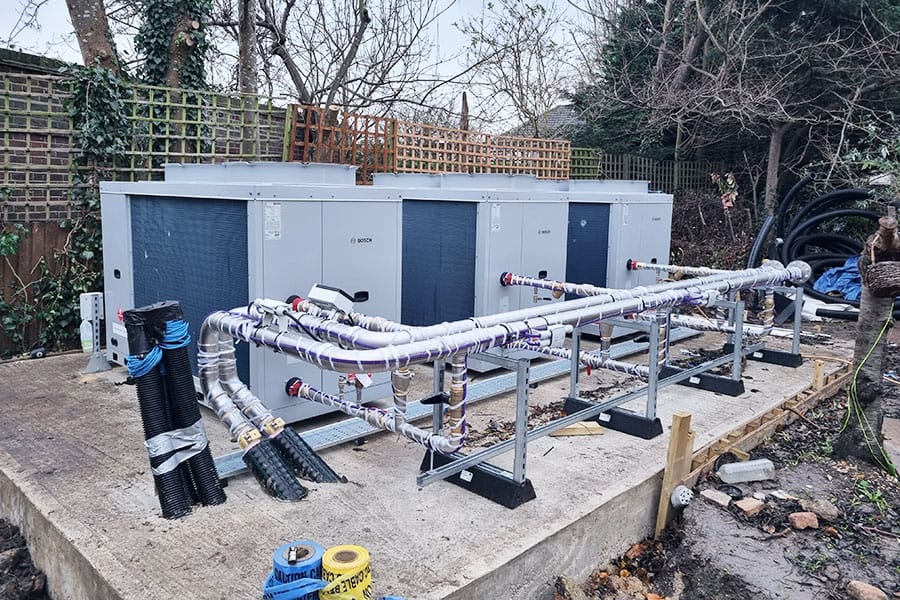Background
Fountain Court is a sheltered housing scheme located in the Royal Borough of Kingston upon Thames, housing vulnerable tenants who rely on heating and hot water systems for comfort and wellbeing. As part of the government’s drive to decarbonise the built environment, the project aimed to replace outdated gas boilers with more energy-efficient, sustainable alternatives.
The objective was to decarbonise the heating and hot water systems by installing three air source heat pumps (ASHPs), along with a complete overhaul of radiators, distribution pipework, and the installation of heat interface units (HIUs) in the tenanted properties. The work needed to be completed with minimal disruption to the tenants and the property required bespoke installations due to the nature of the existing infrastructure.
The project began in late August 2024 and was fully operational by January 2025, ensuring a swift transition to the new systems for the residents.
Scope of Work
The Fountain Court decarbonisation project required extensive planning and coordination to meet the needs of the sheltered housing scheme and the decarbonisation goals. The key elements of the project included:
1. Installation of Air Source Heat Pumps (ASHPs)
Three ASHP units were installed at the rear of the property on a bespoke base and enclosure to ensure their functionality and protection from the elements.
The ASHPs were selected for their energy efficiency and ability to provide sustainable heating and hot water, aligning with the decarbonisation goals of the project.
2. Radiator and Pipework Replacement
The project included the full replacement of all radiators throughout the property, ensuring that the new system was capable of providing adequate heating to all units.
Larger radiators were installed to accommodate the different heating demands of the new ASHP systems.
Distribution pipework was also replaced to ensure it could handle the new heating system and provide controllable heat to each property.
3. Heat Interface Units (HIUs) Installation
In each of the tenanted properties, HIUs were installed to supply controllable heating and hot water. These units ensure that residents can easily manage their heating and hot water use, with the added benefit of improved energy efficiency.
4. Tenant-Focused Installations
As the work was carried out in a tenanted property, careful attention was paid to tenant comfort and convenience. Installations were carried out with minimal disruption, and tenants were kept informed throughout the process.
Temporary solutions were used when needed to ensure that heating and hot water were available while the permanent installations were completed.
Key Challenges and Solutions
Decarbonisation of Existing Heating Systems
One of the primary challenges was replacing the existing gas boilers, which were a central part of the heating infrastructure, with ASHPs. The switch to a low-carbon heating system required significant modification to the existing infrastructure, including radiators, pipework, and the introduction of HIUs. The team managed this transition smoothly, ensuring that the new system met the heating demands of the property while reducing carbon emissions.
Bespoke Installations
The installation of the ASHPs on a bespoke base and enclosure was necessary due to the property’s layout and the need to protect the units from the elements. This bespoke approach ensured that the ASHPs were securely installed and functioned optimally throughout the year.
Additionally, the replacement of radiators with larger units required careful planning and installation to ensure that the new system worked effectively in every property.
Managing Tenants and Minimising Disruption
◦s the project was carried out in tenanted properties, managing tenant expectations and minimising disruption was a critical consideration. The team coordinated closely with residents to ensure that their heating and hot water needs were met during the installation period. Temporary heating and hot water systems were used where necessary to ensure continuity of service.
The project was carried out in phases to avoid large-scale disruptions, with regular updates provided to tenants about progress and schedule changes.
Timeline and Coordination
The project had a tight timeline, starting in late August 2024 and requiring full operational status by January 2025. The team employed rigorous scheduling and close coordination between the installation, technical, and tenant management teams to ensure that the project was completed on time and to the required quality.
Project Management and Team Coordination
Effective project management was crucial to the success of the Fountain Court decarbonisation project, particularly due to the complexity of the installations and the need to manage tenant expectations. The project team worked collaboratively to ensure that all elements of the project were delivered on schedule and within the budget.
Key management actions included:
- Detailed pre-planning to ensure that the bespoke installation of the ASHsPs and other systems was possible within the property’s constraints.
- Continuous communication with tenants to ensure that they were aware of the schedule and the work being carried out. Regular updates were provided to keep tenants informed and reduce the impact of the works.
- Coordinated scheduling between the different teams, ensuring that the installations of radiators, pipework, and HIUs were completed in parallel with the ASHP installation.
Outcomes and Impact
- Successful Decarbonisation: The transition from gas boilers to air source heat pumps has significantly reduced the carbon footprint of the heating and hot water systems at Fountain Court. The new ASHPs provide an efficient, low-carbon alternative that will support the Royal Borough of Kingston upon Thames’ sustainability goals.
- Improved Tenant Comfort: The installation of larger radiators and HIUs has enhanced the comfort of the tenants, providing controllable and reliable heating and hot water throughout the property. The tenant-focused approach ensured minimal disruption during the works, with temporary systems used when necessary to maintain services.
- Energy Efficiency: The new systems are energy-efficient, ensuring long-term savings for both tenants and the local council. The shift to ASHPs contributes to the decarbonisation agenda while providing an efficient, sustainable heating solution for the residents.
- Project Delivery on Time: Despite the complexity of the work and the tight timeline, the project was completed on schedule, with Fountain Court fully operational by January 2025, meeting all the project’s key objectives.
Conclusion
The Fountain Court decarbonisation project is an excellent example of how a complex heating system upgrade can be delivered in a live, tenanted environment. The successful installation of ASHPs, alongside the replacement of radiators, pipework, and the installation of HIUs, has not only decarbonised the property’s heating system but has also improved the comfort and energy efficiency of the residents' homes.
This case study highlights our expertise in managing large-scale, energy-efficient retrofit projects in tenanted properties, demonstrating our ability to deliver decarbonisation solutions that meet both sustainability goals and tenant needs. The Fountain Court project is a significant step towards creating a low-carbon, energy-efficient future for the Royal Borough of Kingston upon Thames.
